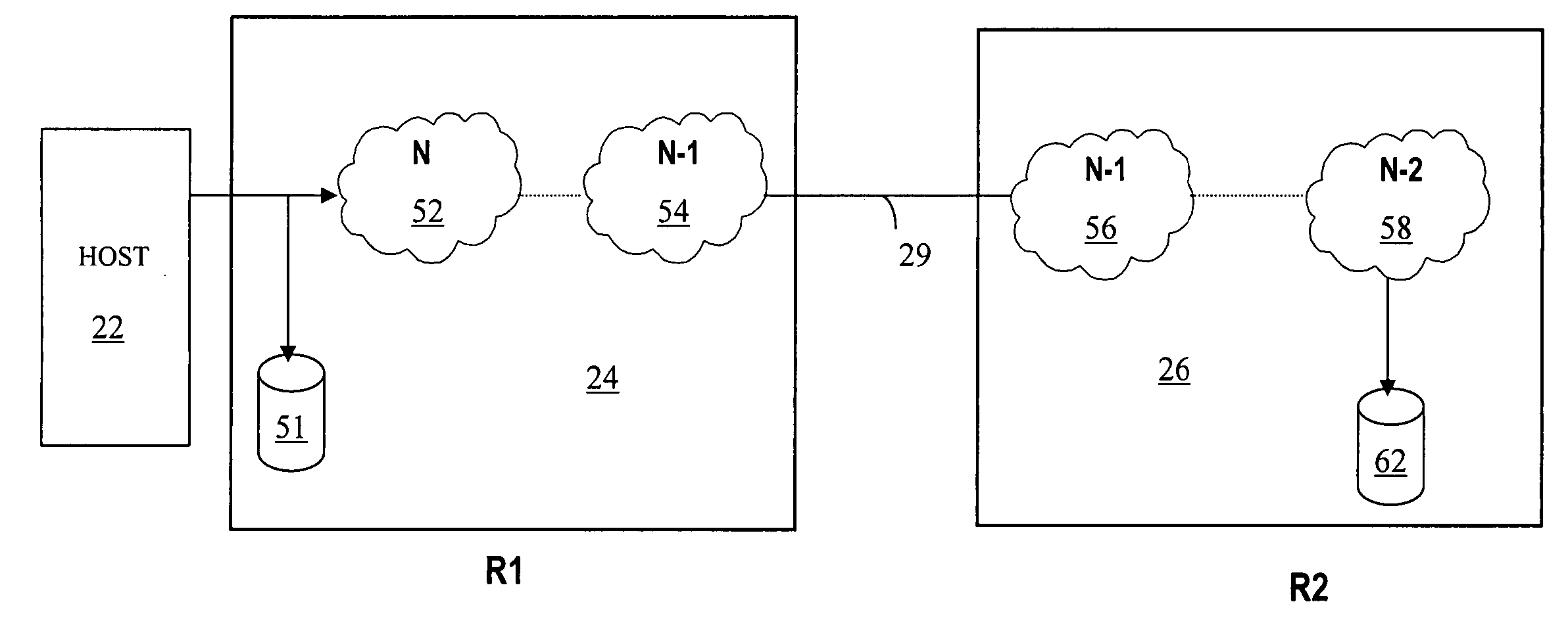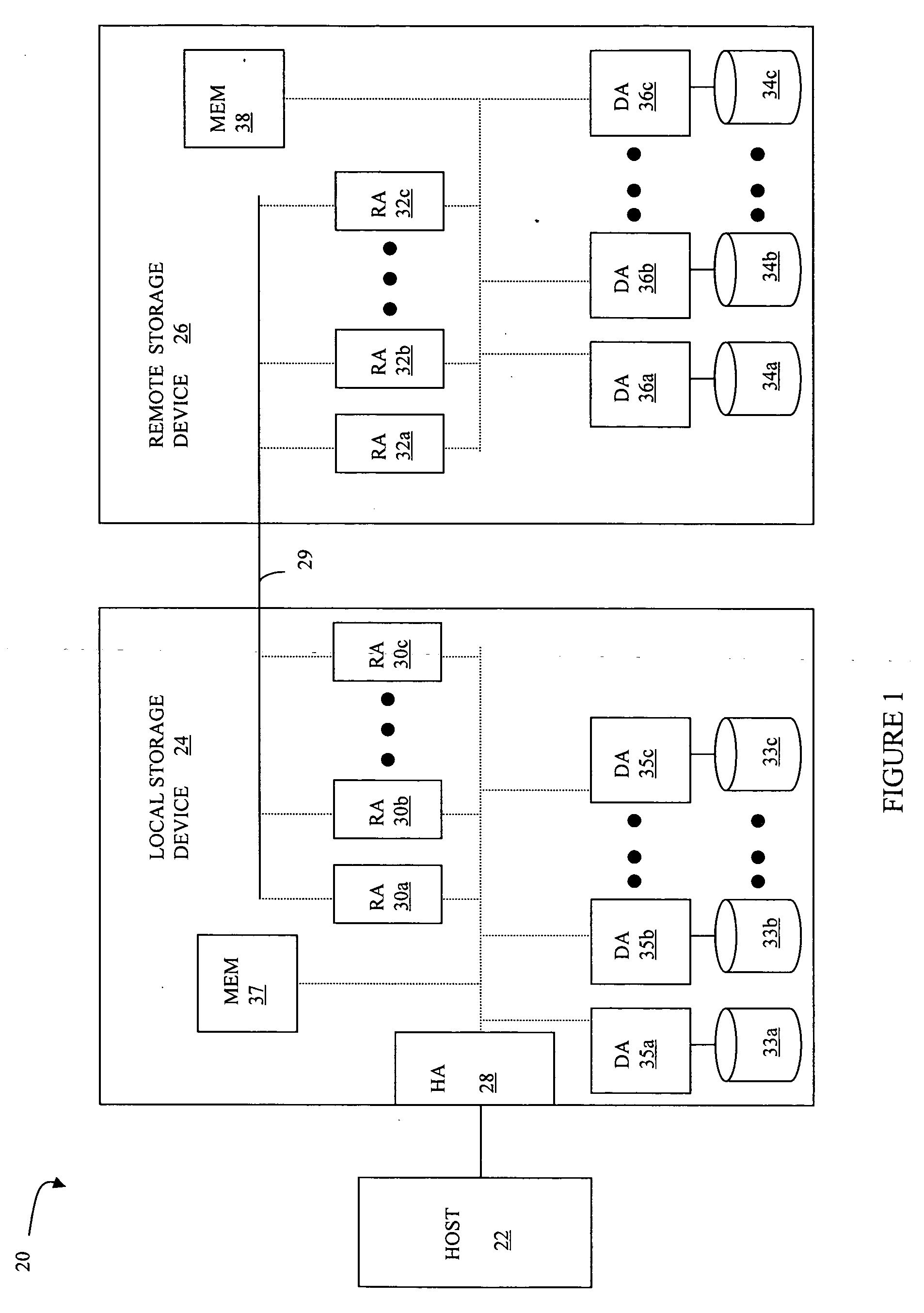Host implementation of triangular asynchronous replication
- Summary
- Abstract
- Description
- Claims
- Application Information
AI Technical Summary
Benefits of technology
Problems solved by technology
Method used
Image
Examples
Embodiment Construction
[0065] Referring to FIG. 1, a diagram 20 shows a relationship between a host 22, a local storage device 24 and a remote storage device 26. The host 22 reads and writes data from and to the local storage device 24 via a host adapter (HA) 28, which facilitates the interface between the host 22 and the local storage device 24. Although the diagram 20 only shows one host 22 and one HA 28, it will be appreciated by one of ordinary skill in the art that multiple HA's may be used and that one or more HA's may have one or more hosts coupled thereto.
[0066] Data from the local storage device 24 is copied to the remote storage device 26 via an RDF link 29 to cause the data on the remote storage device 26 to be identical to the data on the local storage device 24. Although only the one link 29 is shown, it is possible to have additional links between the storage devices 24, 26 and to have links between one or both of the storage devices 24, 26 and other storage devices (not shown). In addition...
PUM
 Login to View More
Login to View More Abstract
Description
Claims
Application Information
 Login to View More
Login to View More - R&D Engineer
- R&D Manager
- IP Professional
- Industry Leading Data Capabilities
- Powerful AI technology
- Patent DNA Extraction
Browse by: Latest US Patents, China's latest patents, Technical Efficacy Thesaurus, Application Domain, Technology Topic, Popular Technical Reports.
© 2024 PatSnap. All rights reserved.Legal|Privacy policy|Modern Slavery Act Transparency Statement|Sitemap|About US| Contact US: help@patsnap.com










